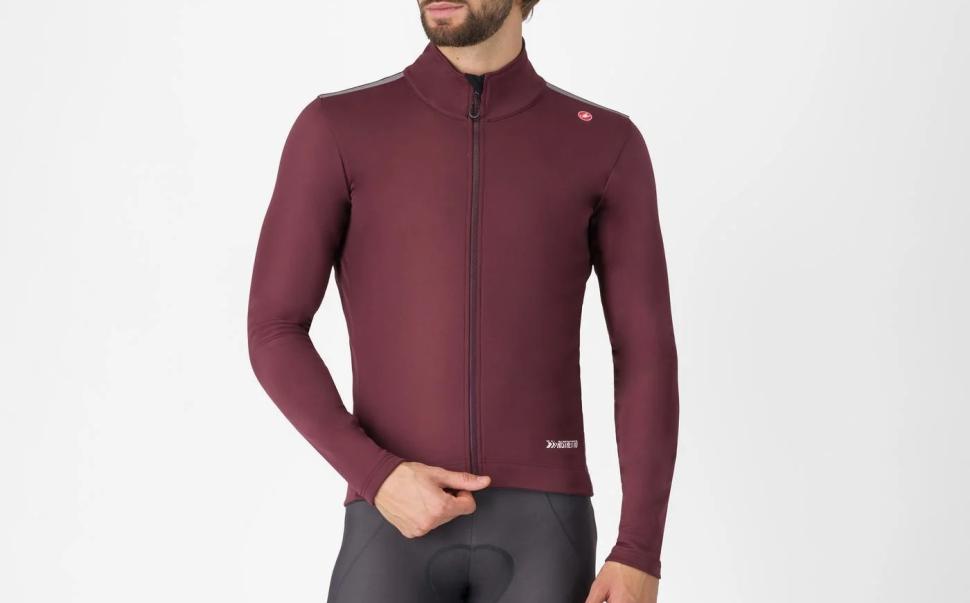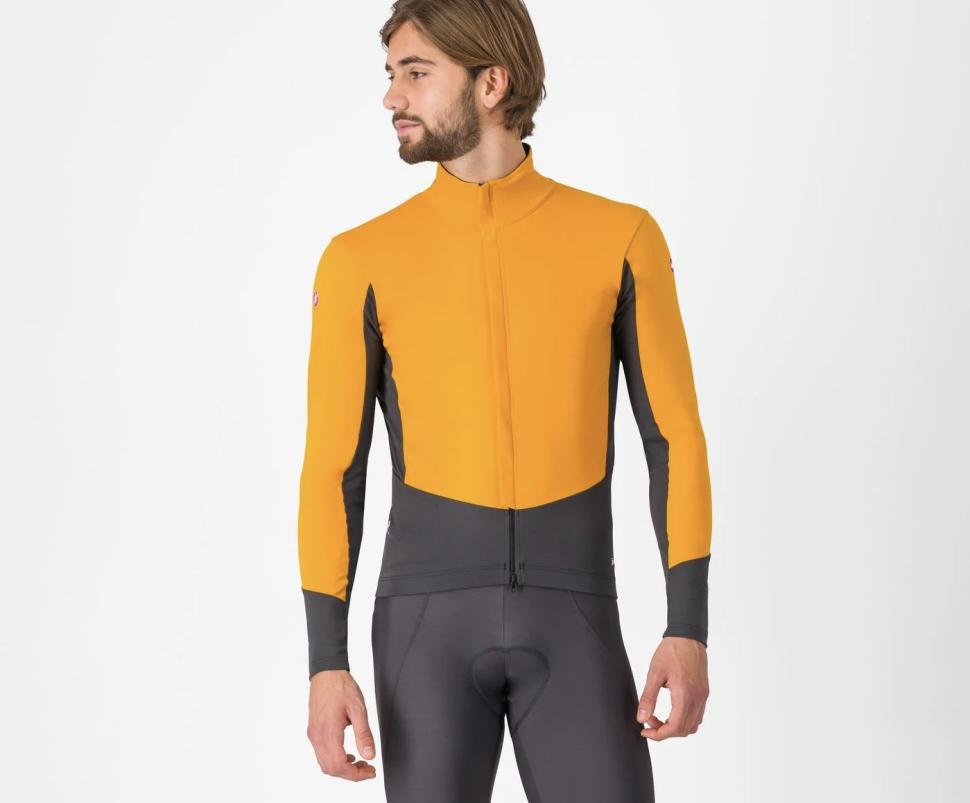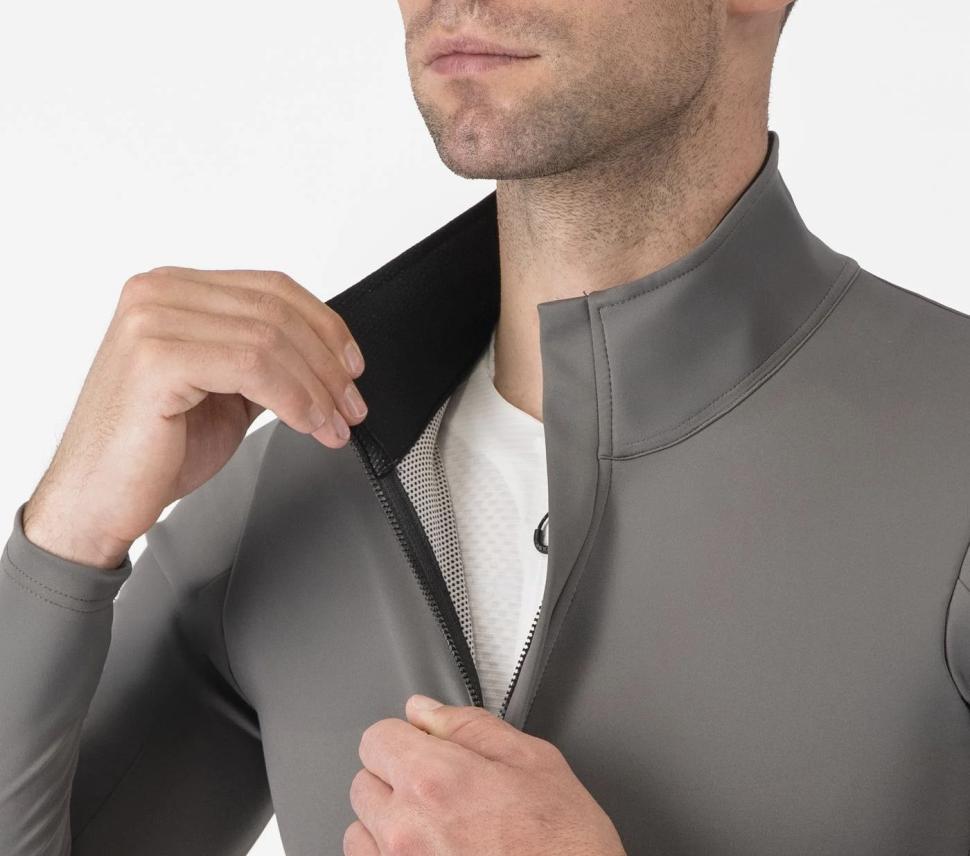- News
- Reviews
- Bikes
- Components
- Bar tape & grips
- Bottom brackets
- Brake & gear cables
- Brake & STI levers
- Brake pads & spares
- Brakes
- Cassettes & freewheels
- Chains
- Chainsets & chainrings
- Derailleurs - front
- Derailleurs - rear
- Forks
- Gear levers & shifters
- Groupsets
- Handlebars & extensions
- Headsets
- Hubs
- Inner tubes
- Pedals
- Quick releases & skewers
- Saddles
- Seatposts
- Stems
- Wheels
- Tyres
- Tubeless valves
- Accessories
- Accessories - misc
- Computer mounts
- Bags
- Bar ends
- Bike bags & cases
- Bottle cages
- Bottles
- Cameras
- Car racks
- Child seats
- Computers
- Glasses
- GPS units
- Helmets
- Lights - front
- Lights - rear
- Lights - sets
- Locks
- Mirrors
- Mudguards
- Racks
- Pumps & CO2 inflators
- Puncture kits
- Reflectives
- Smart watches
- Stands and racks
- Trailers
- Clothing
- Health, fitness and nutrition
- Tools and workshop
- Miscellaneous
- Buyers Guides
- Features
- Forum
- Recommends
- Podcast
 Castelli Ristretto Dec 2024
Castelli Ristretto Dec 2024Castelli's Ristretto tech offers a new era in sweat-free and chill-free cycle clothing to keep you drier than ever

This article includes paid promotion on behalf of Castelli
“The headline for this story should be: ‘Everything we’ve told you for the last 50 years about what to wear while cycling is wrong!’” Castelli global brand manager Steve Smith somewhat surprisingly admits when talking about his company’s new air-permeable Ristretto fabric.
“There’s a profound insight behind Ristretto and that came about from talking to more and more people, and asking the basic question: do you ride in the rain? If you ask this in a crowd, very few hands go up. Or if you ask, ‘When was the last time you intentionally rode in the rain?’ the average ranges from never to six months ago. With a UK-specific market that response might be a little bit higher, but surprisingly not actually that much.
“Despite the fact that all cycle clothing brands have focused on the wet weather performance of their clothing, we realised there was actually very little requirement for rain protection. And because of that, we realised that we have been living with compromised products for the last 50 years.”
Around the same time as the team at Castelli came to this realisation, Steve attended the Tour of Flanders Sportif.
“It was a terrible rainy day. Even though we have products like Perfetto RoS 2 – which is essentially a rain product – when it’s proper rain, we just saw everybody putting on rain capes,” Steve says.
“So if people aren’t wearing our in-between stuff in the rain, they’re putting on a proper rain cape and they’re riding in mostly dry conditions. I wondered, how far can we push breathability and comfort if we don’t have to consider rain as part of the equation?”
A new approach
Ristretto is the answer to that question. Developed with expert partners near Castelli’s base in Italy, Ristretto brings a new philosophy to cycle clothing and adds an important new element to the mix: air permeability.
“From a physical standpoint, being wet on the inside causes conductive heat loss pretty bad: we all know that when we are wet inside, we get chilled. With wet weather clothing, you often end up with a high concentration of moisture on the inside of the jacket, hopefully a lower relative humidity on the outside of the jacket, and it becomes a matter of how much moisture can be pushed out through the jacket to stay dry inside,” Steve says.
“But if you don’t have to worry about rain, and you’re not just counting on what a membrane can absorb and evaporate, you can use dry air coming in to pick up moisture and then take it away. How much air permeability can we allow to come into the jacket before we feel a sort of windchill and a perceptible amount of air?
“There’s no book out there that tells you: one, how to measure this; two, how much is an acceptable amount; and three, how to make those fabrics. So this is when the fun started.”
To start, the Castelli team had to decide which from a vast range of air permeability tests most closely simulated what was felt by cyclists.
“The different tests have different levels of wind pressure coming through. If you were doing this for a type of product that was designed for walking round the city, it wouldn’t be the same as having a 30kph wind hitting you. Equally, some of these test are quite high pressure, which also doesn’t really replicate cycling,” Steve says.
“So we first standardised the test that most closely represented what we feel in the outside world. Then we narrowed down the range of what we considered acceptable air permeability, trying to get as much air in without getting chilled or being able to perceive that that air is coming through. The perception had to be that we were still wearing a completely windproof product.”
Finding the answer
With the ideal air permeability parameters established, the next stage was to work out how to find this in a fabric.
“We surveyed all the usual suspects when it came to fabric manufacturers but nobody had anything close to what we wanted, so we set out to build it ourselves,” Steve says.
“When water evaporates, the evaporation cools you. What we’re trying to do is to get that process to happen closer to the surface of the skin, so that when you’re sweating, you are getting that cooling effect but because it’s evaporating that moisture immediately, you should sweat less over the duration of the ride. So you are going to keep your body at a more even operating temperature.
“The key element to achieve that is the knit of the fabric. We did look at woven fabric because you can make woven garments quite a bit tighter, but washing woven fabric tends to loosen it up a lot more. So you might have a level that is perfect when it is a new garment but, over time, as it’s washed, it starts to let too much air through.”
Working with Castelli’s innovation and technology partner ITTTAI in Italy, Castelli initially came up with two different versions of Ristretto fabric. Of course, scientific theory and lab testing can only take you so far. To hone in Ristretto’s real-world abilities, it was a case of Steve and co getting out on their bikes.
“Fortunately we have Monte Grappa right behind us, so even in the summer, we can go up to 1700m right outside our back door and find 5, 6, 7-degree weather and test the garments there,” Steve says.
“It’s not really a lab test that you’re trying to hit – in fact, you wouldn’t even know how to formulate a lab test for this – you just need to be out there riding in as many different conditions as possible, with different humidity and temperature and intensity, and try to figure out what you need. It was a case of trial and error. But the end result is cycle clothing performance quite unlike anything we’ve ever seen before.”
Product one: Castelli Espresso Air Jacket £225
The first Ristretto product is Castelli’s Espresso Air: a jacket designed for cold-weather conditions.
“I would say the Espresso is really made for 8 degrees and lower, even down to sub-zero temperatures,” Steve says.
“It uses a knitted face and a fleece back, so it is a slightly heavier weight, winter-rated piece that allows four times as much air to come through than was possible with Gore Windstopper. That is a considerable amount, but the rider still has no perception of wind coming through the jacket whatsoever, even on a high-speed descent.
“It's really strange the way this works. One of the test I did was to go out for a night gravel ride, it was about 2 degrees, so it was proper cold conditions. Unfortunately, late in the ride, I had a slow leak in the front tyre. I stopped to pump it up and I realised, the entire jacket is letting off steam because of the amount of air that’s pushing through the jacket. It looked like there was a fire inside it.”
But it’s not just in super cold weather that Ristretto can have an effect.
“I tested the Espresso on a perfectly sunny 10-degree day, when the jacket was really overkill. With the fully windproof products we’ve had in the past, when you start to sweat, you build up quite a lot of moisture on the inside which eventually then makes you cold and your body temperature drops,” Steve says.
“With the Espresso, as soon as you start sweating, there’s enough air coming in to evaporate it, and your body immediately starts to cool itself. You don’t have the same peaks and troughs of body temperature; you make that curve much, much more flat. And when we stopped for a coffee, when everybody else felt uncomfortable and cold in their damp clothes, I was sitting there completely dry.”
Product two: Castelli Perfetto Air Jacket £250
Taking that warm-weather performance a step further is Castelli’s Perfetto Air jacket – a garment that boasts an astonishing six-times enhanced air permeability over Gore Windstopper fabric.
“The Perfetto Air is pretty lightweight and aims to cover the same temperature ranges as the Perfetto jacket, but this keeps you so much more dry. It can actually go to warmer conditions, and it can go to higher-intensity colder conditions because it is breathing off so much,” Steve says.
“In this case, the fabric has the same face as the Espresso but the inside doesn’t have fleece, so there is more air coming in. You could have another layer underneath it, and if you were taking it to a higher-intensity ride, you might be able to take it down to five or six degrees. But if you have just a base layer and are just riding around, you can go to 15 or 16 degrees and be happy with it, which you could never do with the old Perfetto. And this product is more stretchy, so the fit feels like you are wearing nothing with that little bit of air coming in feeling refreshing.”
Those hours on the road that the Castelli team spent testing the Perfetto Air did identify one little quirk though.
“We found that, at above 40kph, there was a strip of about 4cm along the front of the arm and along the shoulder where you could actually feel that it’s colder,” Steve says.
“So we put a very light lining on the front of the sleeve down to the elbow and across the shoulder part. With that lining, you don’t perceive any air coming in any more, even though there is 50% more air coming through than the Espresso jacket.”
Product three: Coming Winter 2025
To complete the full Ristretto range, Castelli has another product set to launch in winter 2025. Currently unnamed, this will be at the very upper range of what’s possible with Ristretto, offering about 12 times the amount of air permeability.
“With that one, you can actually perceive the air coming in, but it is more aimed at the way that a lot of people are wearing Gabbas. They’ll take it out on a 12, 13 or 14-degree day and the Gabba just can’t keep up with that level of sweat. So this one is meant to be the perfect jacket for conditions where a lot of people are using a short-sleeve Gabba today,” Steve says.
“This whole Ristretto development has been an incredible learning experience. No-one has ever done fabrics like this before: aiming for engineered air permeability; having to figure out what the ideal performance is that we want; how to test it; and then how to build fabrics that achieve it.
“It’s been quite a journey because we’ve had to use some entirely new construction techniques for fabrics and then build new garments. But we think Ristretto offers cyclists a whole new realm of performance that will make their time on the bike even more comfortable and enjoyable.”
To find out more visit castelli-cycling.com






My understanding was traffic data also suggests that its actually made driving quicker not slower in Paris....
"...pedestrians remain unable to access the site due to safety reasons." Who is causing the danger?
You missed the most important part of the Cycling UK rebrand, which was them taking a side in the cycling cat debate.
"... struck by a driver..." http://rc-rg.com
That's only for longer journeys; obviously for short trips he employs the sedan chair.
In accordance with the highway code ? bus driver was breaking the speed limit, overtaking a child on a bicycle, he should've as far right as...
One is permantly in misery mode, the other all blacked out in stealth mode.
...and go and ride your bike for two hours or less.
Just put in planning permission for a NASA sized warehouse the area of ten football pitches, right up against local housing. That'll go through no...
It reminds me of the joke that used to do the rounds when I was younger;...